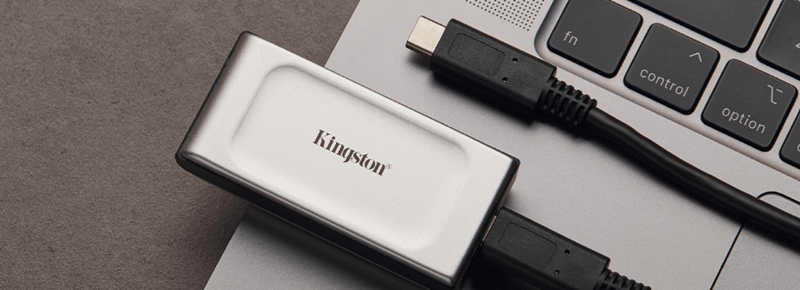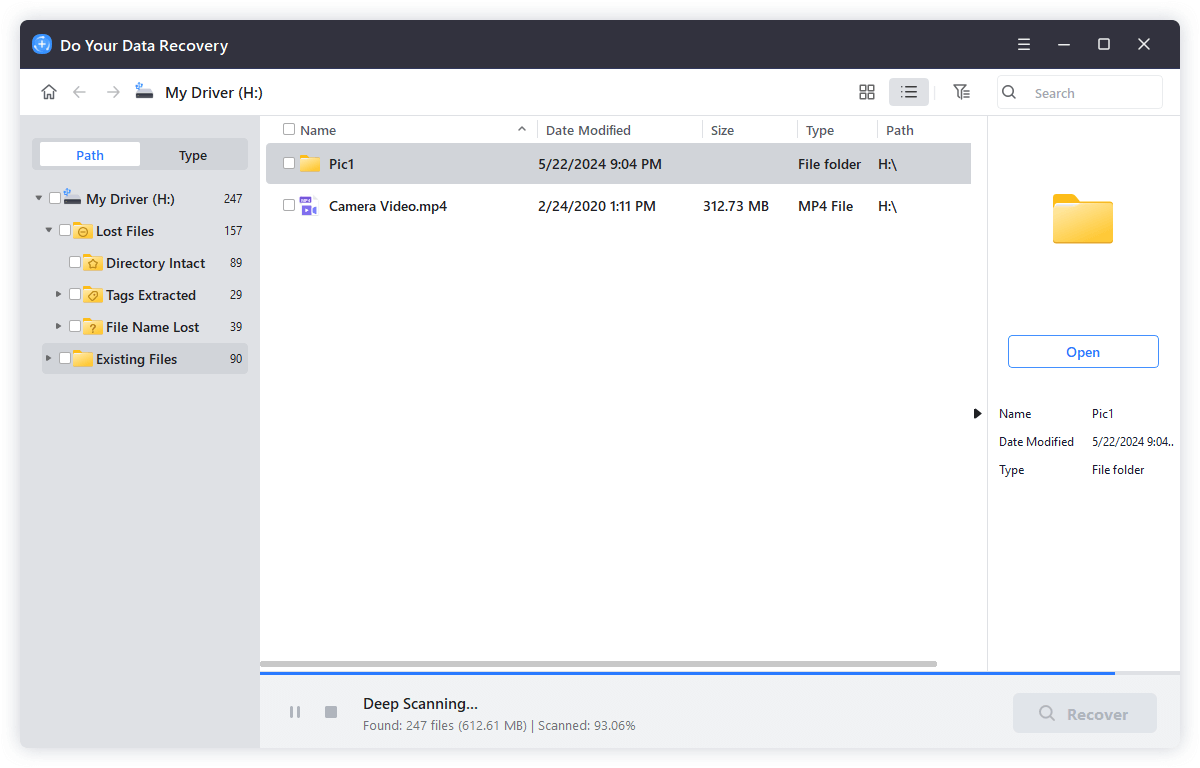Quick Navigation:
- How to Disable TRIM Before Kingston SSD Data Recovery?
- Kingston SSD Data Recovery with Data Recovery Software
- Professional Kingston SSD data recovery services
- Important Considerations and Precautions
- Kingston SSD Data Recovery FAQs
- Conclusion
Imagine your terrible feeling when your beloved Kingston SSD suddenly loses the files or memories very important to you at work. When you lose data from a solid-state drive you trust, it can make you feel many different feelings, from frustration and worry to outright panic. Don't worry, though!
This guide should be your only source of light in the digital darkness. You've found where you can regain lost info on your Kingston SSD. We are about to go on an adventure together, where we will discover the secrets and get back what seems lost. There is no technical speak here, just a simple, easy-to-understand path full of helpful hints on how to get back your lost files. Prepare to discover the portal to resurrect your valuable data, making that terrifying data loss a minor tech glitch!

How to Disable TRIM Before Kingston SSD Data Recovery?
If you're using a Kingston SSD and want to ensure that no data is lost while recovering it, you might want to disable TRIM first. This feature increases SSD speed by deleting unnecessary data blocks. Disabling TRIM is as follows:
1. Windows:
- "Windows PowerShell (Admin)" or "Command Prompt (Admin)" can be accessed with administrative credentials by pressing "Win + X" and selecting them.
- After entering "fsutil behavior set DisableDeleteNotify 1," hit Enter to save the changes.
Disabling TRIM on all system-connected SSDs is the result of this command.
2. Mac:
- Go to Applications > Utilities and open Terminal.
Just click the Enter key after typing "sudo trimforce disable.". - Confirm deactivating TRIM by following the on-screen instructions. It might necessitate restarting your machine.
Turning off TRIM beforehand increases the likelihood of data recovery success by preventing the SSD from erasing erased data blocks. To ensure the continued speed and lifespan of the SSD, remember to enable TRIM once the recovery process is over.
Kingston SSD Data Recovery with Data Recovery Software
These are the procedures to take while using Do Your Data Recovery to retrieve data from Kingston SSD:
1. Download and Install: Download the Do Your Data Recovery, then install it on your computer (both Windows and macOS are supported).
2. Connect the SSD: Connect the Kingston SSD to your computer. Make sure the computer detects it.
3. Launch Do Your Data Recovery: Launch the program and choose the Kingston SSD as the media to be recovered.

4. Scan the SSD: Select the drive to begin a thorough scan. Let the program look for lost partitions and files as deeply as possible.

5. Preview and Recover: The software will show you which files can be recovered after the scan. Before you choose which ones to retrieve, preview them to ensure they are intact.

6. Choose Recovery Location: Choose an alternative destination folder to store the restored files. To avoid overwriting, don't save them to the Kingston SSD again.
7. Recover Data: Select the files to recover and click the "Recover" button.
Professional Kingston SSD data recovery services
Professional data recovery services may be necessary when ordinary recovery procedures fail, or the data is sensitive and important. Data restoration services are available for Kingston SSDs and other damaged, corrupted, or inaccessible storage devices. These services make use of specialized equipment and cleanroom facilities.
Professional data recovery services are expensive, but the best way to recover Kingston SSD data. Professional recovery may only sometimes succeed, especially with serious SSD damage. Before hiring professionals, weigh the worth of your lost data against the expense of recovery.
Important Considerations and Precautions:
Data recovery and general data protection on a Kingston SSD are both affected by several crucial factors that must be carefully considered and handled:
1. Cease SSD Usage: In the event of data loss, you must immediately cease using the Kingston SSD. The likelihood of effective data recovery decreases if continued use overwrites erased data. While you wait for data recovery efforts to finish, do only a few writes to the SSD.
2. Read-Only Mode: A read-only mode is available in some data recovery applications. Turning this function on will stop the recovery procedure from touching the SSD, which means less data loss.
3. Patience is Key: Data recovery can take time, especially for comprehensive scans. Give the recovery program enough time to scan the SSD thoroughly. If you skip steps, you can end up with a partial recovery.
Kingston SSD Data Recovery FAQs
1. How to recover lost data from the Kingston SSD?
You can use Do Your Data Recovery to help you recover lost data from your Kingston SSD. It will deeply scan the Kingston SSD, finding all recoverable files including existing files, deleted files, formatted data, inaccessible files, etc. Then select the wanted files and save them.
2. It is possible to recover lost data from a formatted Kingston SSD?
Yes, the formatted data is not lost forever. Follow the steps below to unformat a Kingston SSD:
- Download and install a data recovery program on your computer.
- Connect the Kingston SSD to your computer.
- Select the Kingston SSD and click on Scan button.
- Recover all files once the scan is completed.
3. My Kingston SSD can be used on a Windows PC, but can’t be used on a Mac, why?
If the Kingston SSD has been formatted to NTFS file system, you can’t use it on your Mac. Just open Disk Utility to erase it to APFS, Mac OS Extended or ExFAT.
If you don’t want to reformat the NTFS Kingston SSD, you can install a third-party NTFS for Mac tool on your Mac, open it. Run it to enable writable for all NTFS drives on your Mac.
Conclusion:
Although losing data on a Kingston SSD is never fun, data recovery is usually achievable with the correct tools and methods. Stop using the SSD immediately, apply reliable data recovery software, think about getting expert help if necessary, and take measures to avoid data loss in the future. Regularly backing up data should be your top priority to prevent data loss. Your chances of successfully recovering data from your Kingston SSD will be enhanced if you follow these procedures carefully.